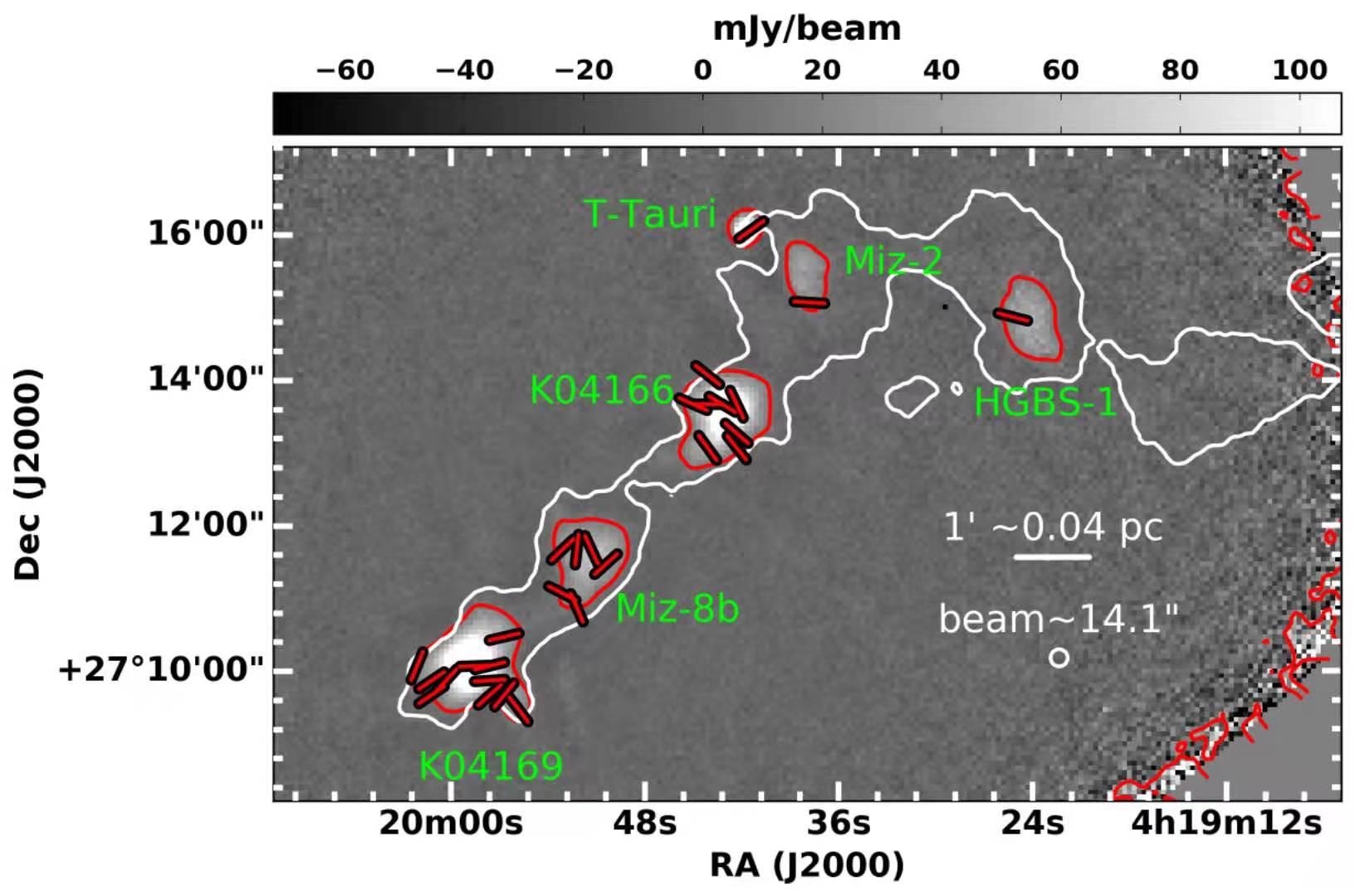Jun 2 2021
Throughout the Milky Way Galaxy, the presence of magnetic fields is omnipresent and they have a vital role in all dynamics of the interstellar medium.
 Core-scale magnetic fields (red segments) inferred using high-resolution and sensitive dust emission polarization observations using JCMT. The Solar-type star forming cores fragmented out of B213 filament are shown. Image Credit: Eswaraiah Chakali, et al. 2021.
Core-scale magnetic fields (red segments) inferred using high-resolution and sensitive dust emission polarization observations using JCMT. The Solar-type star forming cores fragmented out of B213 filament are shown. Image Credit: Eswaraiah Chakali, et al. 2021.
But questions such as how solar-type stars develop from magnetized molecular clouds, if the role of magnetic fields varies at several densities and scales of molecular clouds, and what factors can alter the morphology of magnetic fields in low-mass dense cores remain uncertain.
A new study performed under the guidance of Dr Eswaraiah Chakali from Professor Di Li’s research group at the National Astronomical Observatories of the Chinese Academy of Sciences (NAOC) has answered these questions in part. The study discloses the different magnetic field morphologies present in solar-type star developing cores in the Taurus B213 region.
This research was published in The Astrophysical Journal Letters on May 10th, 2021.
The team employed high-resolution and sensitive 850-micron dust emission polarization data obtained by the James Clerk Maxwell Telescope (JCMT) with the help of the SCUBA-2 camera together with the POL-2 polarimeter.
The observations were performed as a part of a huge international program known as B-fields In STar-forming Region Observations (BISTRO).
Although formed out of the same filamentary cloud, Taurus/B213, among the three dense cores having more polarization measurements, only one remembers the relatively uniform large-scale magnetic field threading the parental cloud.
Dr Eswaraiah Chakali, Study Lead Author, Chinese Academy of Sciences
This is quite the opposite of the predictions of the theory that magnetic fields control star formation. If a large-scale magnetic field is found to be dominant through the entire cloud accumulation, star formation, and core collapse, the mean position angle of the magnetic field must be similar throughout several spatial scales.
Additional analysis of the gas velocity gradient showed that the kinematics because of gas accretion flows onto the parental filament could have modified the configuration of the magnetic field.
“Even in the presence of substantial magnetic flux, local physical conditions can significantly affect magnetic field morphology and their role in star formation,” stated Professor Di Li, co-corresponding author of the study.
Our current observations represent one of the deepest sub-millimeter polarimetry images ever taken using a single dish telescope toward a Galactic region.
Keping Qiu, Study Co-Author and Co-Principal Investigator, Nanjing University
Also, Professor Di Li noted, “More comprehensive analyses, in combination with Planck data and stellar polarimetry, may give more insights into the evolution of magnetic fields in this stereotypical low-mass star-forming region.”
Journal Reference:
Chakali, E., et al. (2021) The JCMT BISTRO Survey: Revealing the Diverse Magnetic Field Morphologies in Taurus Dense Cores with Sensitive Submillimeter Polarimetry. The Astrophysical Journal Letters. doi.org/10.3847/2041-8213/abeb1c.